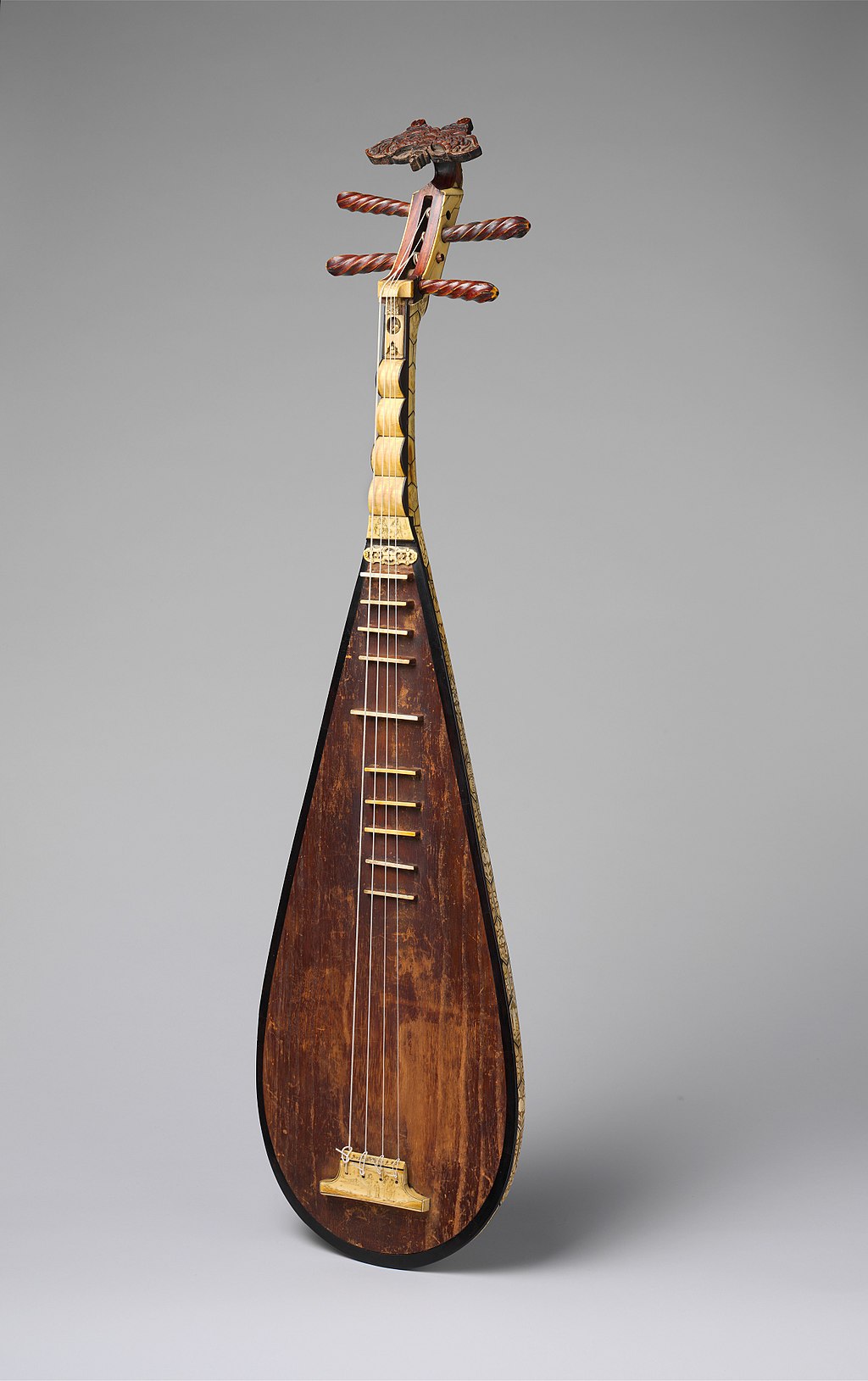Pipa MET DP216711
Shortlink:
Zdroj:
Formát:
2513 x 4000 Pixel (884096 Bytes)
Popis:
Pipa (琵琶)
Chordophone-lute-plucked-fretted
The spectacular back and sides of this unique Ming-dynasty instrument feature more than 110 hexagonal ivory plaques, with thinner bone plaques on the neck. Each plaque is carved with Taoist, Confucian, or Buddhist figures and symbols signifying prosperity, happiness, and good luck. These include images of various gods and immortals, such as Shou Lao, the Daoist god of longevity, who is shown with a prominent forehead on the single plaque at the very top. When the instrument is played, this expert workmanship remains unseen by the listener, as the back faces the player. The front is relatively plain but shows signs of use. The ivory string holder bears a scene featuring four figures and a bridge; an archaic cursive inscription; and, at the lip, a bat motif with leafy tendrils. Above the lower frets, two small insets depict a spider and a bird, and just before the rounded upper frets, a trapezoidal plaque portrays two men, one with a fish. The finial repeats the bat (good luck) motif.
Komentář k Licence:
| Tento soubor byl uvolněn pomocí Creative Commons CC0 1.0 Universal Public Domain Dedication. | |
| Osoba, která toto dílo označila tímto dokumentem, dílo uvolnila do public domain tím, že se celosvětově vzdala všech autorských práv ke svému dílu včetně všech souvisejících a příbuzných zákonných práv, které k dílu má, v rozsahu umožněném zákonem. Můžete toto dílo rozmnožovat, upravovat, rozšiřovat či provozovat, i pro komerční účely, vše bez nutnosti žádat o svolení.
|
Licence:
Credit:
This file was donated to Wikimedia Commons as part of a project by the Metropolitan Museum of Art. See the Image and Data Resources Open Access Policy
Relevantní články
Pchi-pchaPchi-pcha je tradiční čínský strunný nástroj, vycházející z loutny. V Číně se na něj hraje už přes dva tisíce let a předpokládá se, že je původní, na jeho základě vznikly např. japonská biwa, vietnamská đàn tỳ bà a korejská bipa. .. pokračovat ve čtení
